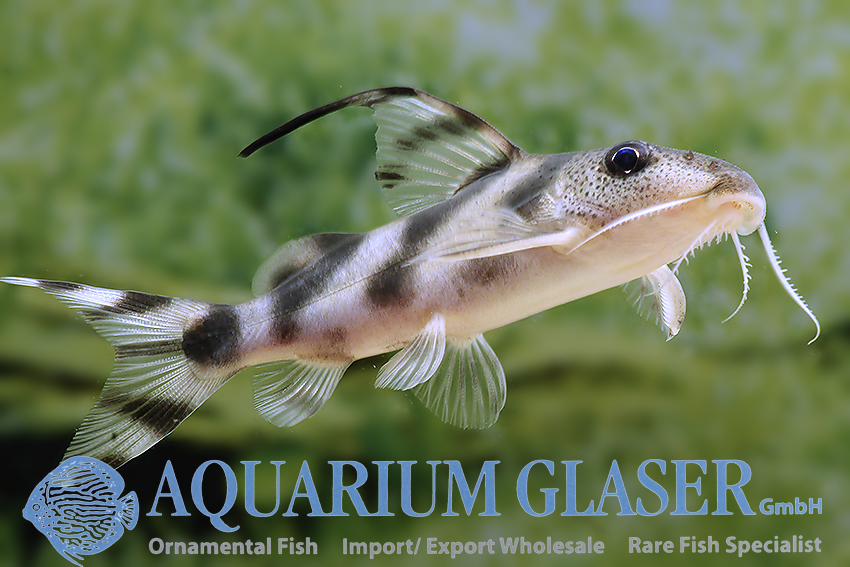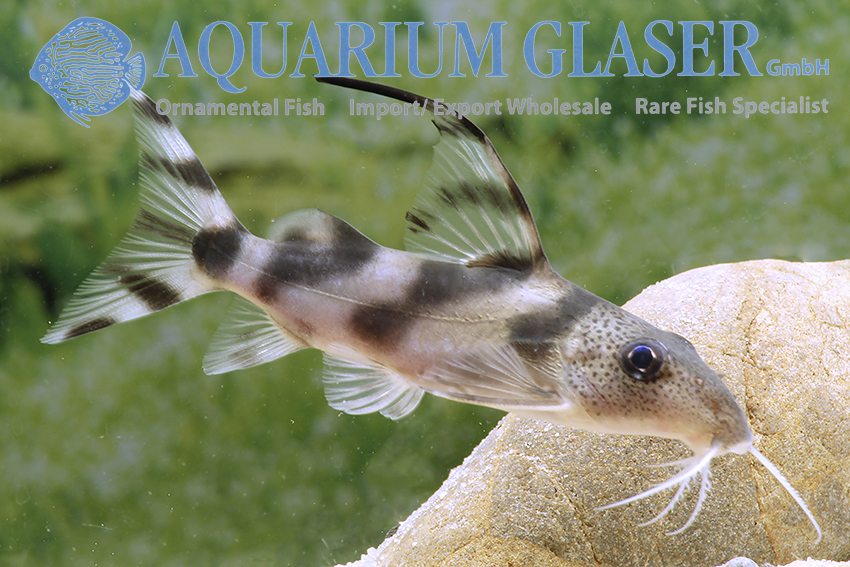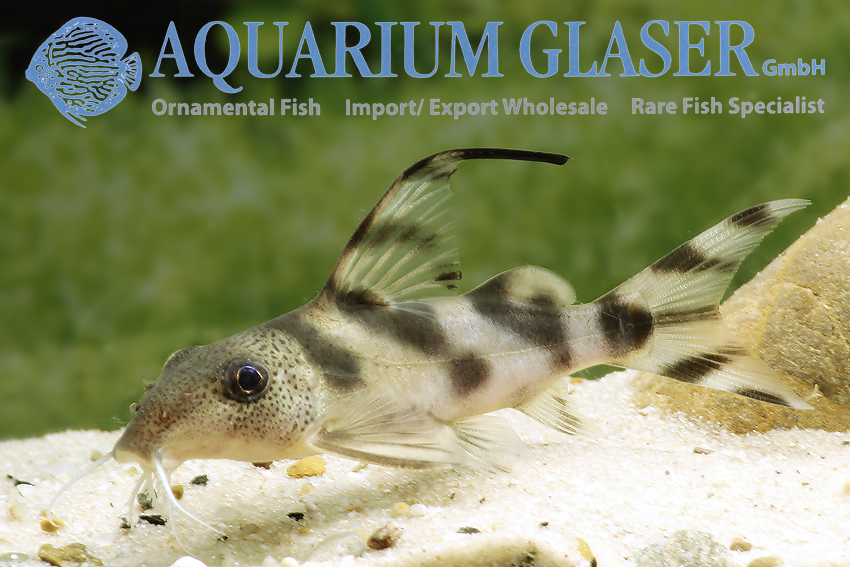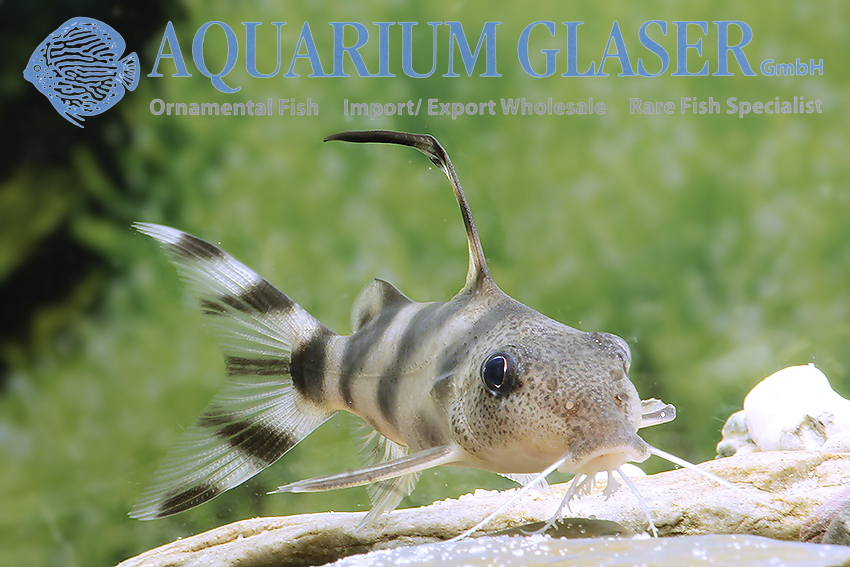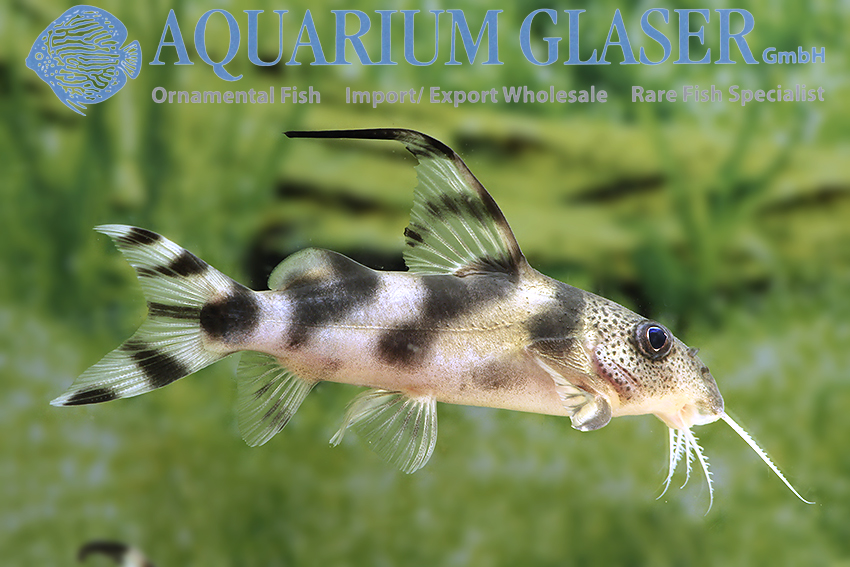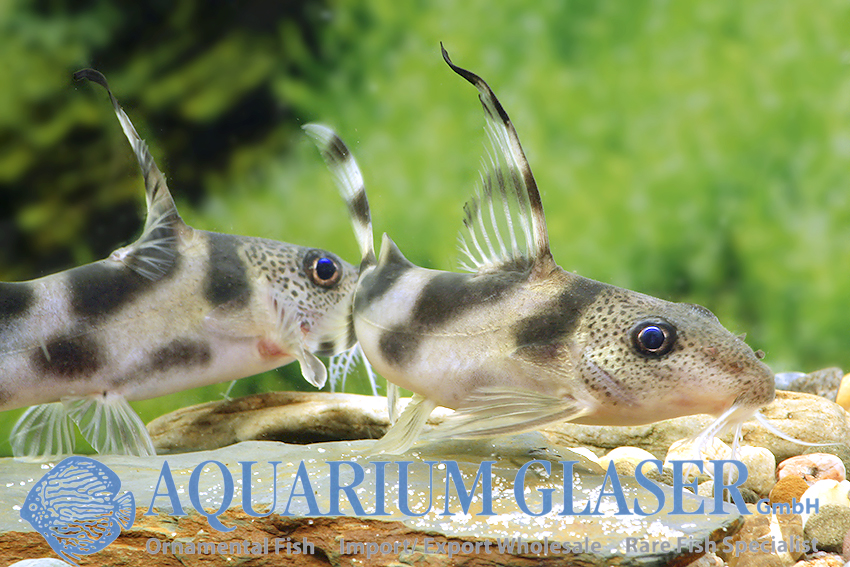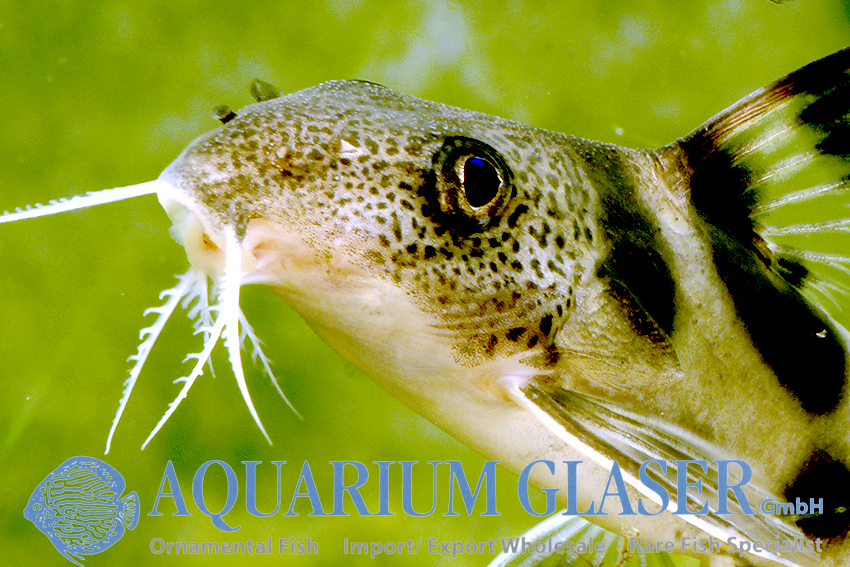One of the most beautiful squeaker catfish (Synodontis) comes from the Congo: Synodontis decorus. The slender species grows about 20-30 cm long and is relatively peaceful. One must always consider that all squeaker catfish have a hierarchy among each other, where “social biting” is absolutely necessary and not alarming, since it only comes to superficial, quickly healing wounds. One should therefore care for squeaker catfish in groups if possible; individual animals can (but don’t have to) become a plague for other fish if they try to take these as substitute partners. Small fish that fit in the mouth are also seen as food supplements by omnivores, so possible tankmates should not be too small. In the wild, adult S. decorus typically live in groups of 10-50 individuals, while juveniles up to about 8 cm long are solitary. Synodontis decorus is a diurnal species, which makes it particularly recommended for aquarium keeping. The animals live in rivers, but not in areas with strong currents.
The conspicuous pennant, i.e. the extended dorsal fin ray, and the very contrasting striped caudal fin are, it is assumed, a signal to conspecifics and serve the swarm cohesion. Small young animals under 8 cm length do not yet have an extended dorsal fin ray. In the Congo, larger Synodontis decorus are so common that they became a preferred prey of fin-eating characins of the species Eugnathichthys eetveldii. The Eugnathichthys have even developed an almost identical coloration as mimicry, which allows them to sneak up on the squeaker catfish unnoticed. On the Congo’s edible fish markets one rarely finds larger S. decorus with intact caudal fins, that’s how effective the Eugnathichthys are. Conversely, Synodontis juveniles are almost always undamaged, so hunting these loners is probably not worthwhile for the fin-eaters.
Externally recognizable sex differences are not known for Synodontis decorus, females are only more corpulent at spawning time. The spawning behaviour has not been reported so far, they are probably free-spawners without further care for their brood. In the aquarium, which should be a large one according to the final size of these animals, the animals are easy to care for, they do not make any special demands on the water composition and eat any commercial ornamental fish food. The water temperature should be between 22 and 26°C, occasionally a little above or below does no harm. Even if the animals are diurnally active, they should have as many roots etc. as possible at their disposal where they can seek cover.
For our customers: the animals have code 176502 on our stocklist. Please note that we only supply wholesale.
Text & photos: Frank Schäfer





